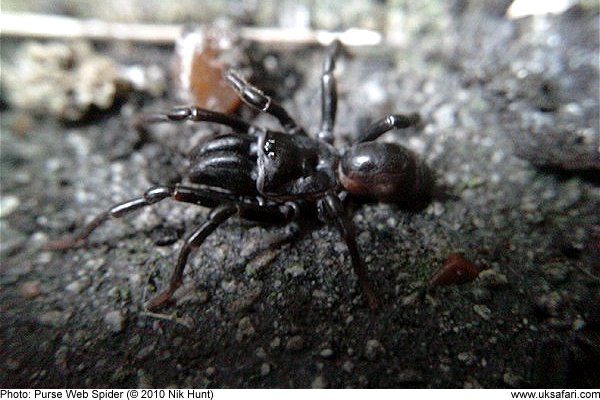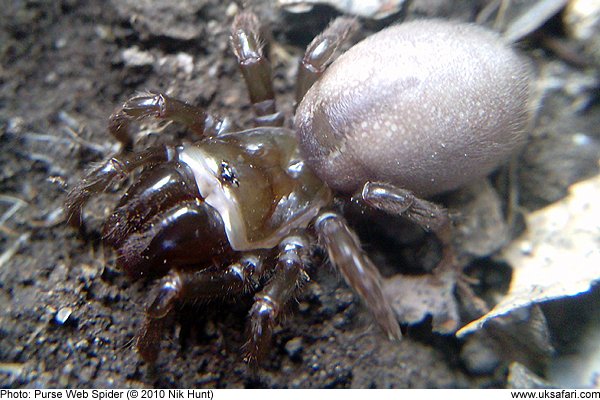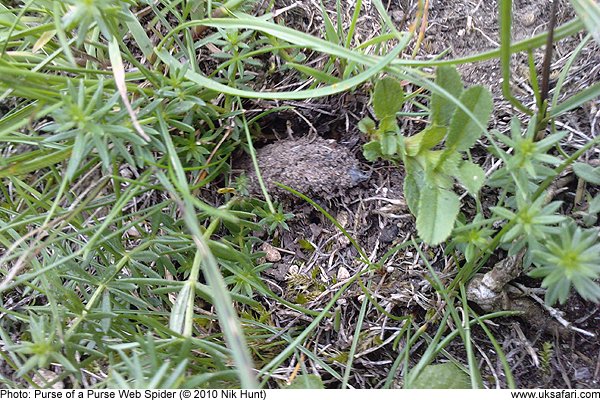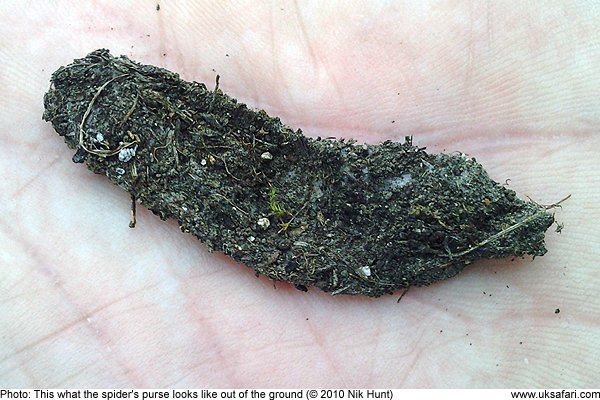 Quick Facts
Quick Facts
Scientific name: Atypus affinis
Size: Female up to 15mm, male up to 9mm
Distribution: Found mainly in southern England, but also recorded in other parts of the UK
Months seen: All year round
Habitat: Rough grassland, especially on sandy or chalky soils
Food: Small invertebrates
Special features: Purse Web Spiders are a dark brown colour, with greyish-white lines where the jaws meet the carapace. The carapace is very square at the front, and the legs are stocky. The abdomen in the female is generally larger than in the male, and more pale in colour.
Purse Web Spiders are so called because they catch their prey from inside a sock-shaped silk tube which is about 8cm long. The tube is covered with dust and tiny stones to help it blend into the surroundings. When an insect lands on the tube the purse web spider stabs its fangs through the purse into the insect and drags the victim inside. The hole in the purse is then patched up.
The tube is like the tip of an iceberg. Beneath it the purse web spider has a silk lined burrow which can extend down a further 50cm.
Purse web spiders belong to the suborder called 'Orthognatha' which means straight jawed. Other species in this suborder include tarantulas, trap-door spiders and funnel web spiders.
 Related Pages
Related Pages

 Popular Pages
Popular Pages
Amphibians, Bats, Badgers, Beetles, Birds, Birds of Prey, Bumble Bees, Butterflies, Caterpillars, Creepy-Crawlies, Deadly Spiders, Dolphins, Dragonflies, E-Postcards, False Widow Spiders, Free Newsletter, Frogs, Fungi, Garden Spiders, Glow-Worms, Grey Squirrels, Hedgehogs, House Spiders, Ladybirds, Mammals, Marine Mammals, Moths, Owls, Reptiles, Spiders, Toads, Trees, Wildlife Hospitals
© Copyright 2017 G. Bradley - UK Safari | About Us | Links | Contributors


 Purse Web Spiders
Purse Web Spiders





